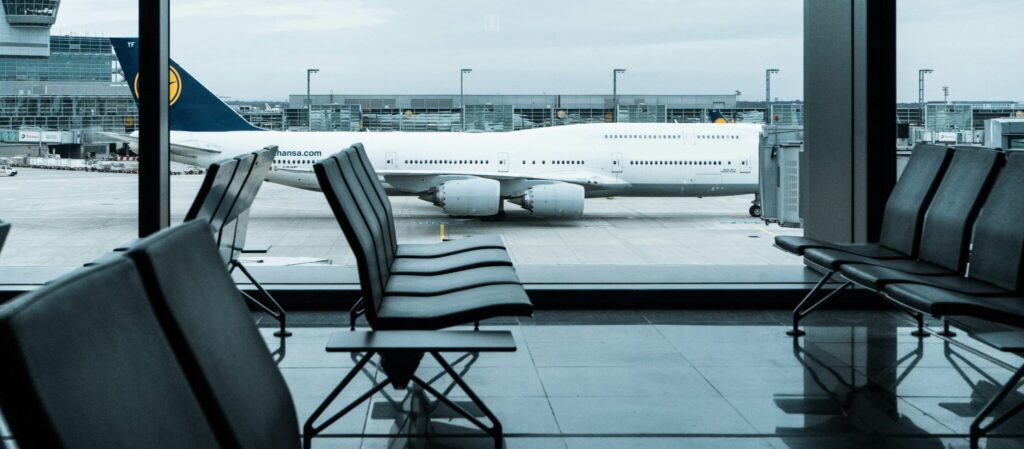
Organised jointly by the European Commission Directorate General for Mobility and Transport (DG MOVE) and the Transport Area of the Florence School of Regulation at the European University Institute (FSR Transport), the Seminar explores the challenges for the regulation of airport charges in the EU.
The Airport Charges Directive was introduced in 2009 to establish a common European framework for regulating the essential features of airport charges. Its aim was to provide a coherent framework for regulating airport charges at EU level, to enhance competition between EU airports, and by providing a regulatory level playing field to prevent possible distortions of competition.
On 7 December 2015 the Commission adopted an Aviation Strategy which aimed at strengthening the competitiveness and sustainability of the entire EU air transport value network, including airports. The Strategy provided for an evaluation of the Directive in order to assess whether there is a need to revise it.
Evaluation of the Directive
The Commission started the evaluation of the Airport Charges Directive in 2016. An external study commissioned to support the evaluation was published on 21 December 2017.
The Commission intends to publish the evaluation staff working document containing its conclusions on the evaluation in September 2018. This document will draw on the external study but also on the Commission’s experience of monitoring the implementation of the Directive as well as input provided by stakeholders at different occasions. The evaluation will also draw on the work done by the Thessaloniki Forum of national independent supervisory authorities.
The evaluation is a backward looking exercise to assess if, and to what extent, the Directive has achieved the objectives it was set out to achieve. The evaluation will have to examine the following issues with respect to the Directive: its relevance, effectiveness, efficiency, coherence and EU value added. It will also assess to what extent the original objectives address all of the issues that may be relevant today in view of market and regulatory developments.
The Commission will present the emerging conclusions of its evaluation and expects from the seminar to get a feedback which will feed into the final conclusions of the Commission’s evaluation.
The impact assessment in view of a possible revision of the Directive
The Commission initiated in 2017 an impact assessment in view of a possible revision of the Directive.
Consumers and citizens are at the heart of any EU initiative. The overarching aim of the present initiative is to ensure efficiency in the provision of airport services at EU airports, and thereby support EU connectivity, improve the competitiveness of EU airports and their users, and ultimately benefit consumers and citizens.
Two possible problems have been identified which this initiative seeks to address.
The first possible problem is the risk that airports with significant market power may misuse their market power. Competition is a dynamic process. Although evidence indicates that most airports within the EU are subject to effective competitive constraints, thereby removing the risk of market power and a fortiori of misuse of such power, there is evidence that some airports may still hold market power, for all or part of their activities. Where an airport may not be subject to effective competitive constraints, there is a risk that it may misuse its power.
The second possible problem is the risk that in certain cases (e.g. where there is an airline with significant buyer power at an airport) the airport charges setting process might impose additional barriers to entry for airlines wishing to launch new services at an airport, for example by hampering investment in airport capacity or skewing the charges schedule in favour of the incumbent.
The following preliminary options have been defined for consideration to address these possible problems.
Option 1: The baseline scenario is “no change”.
Option 2: Adopt Interpretative Guidelines for the existing Directive as well as a Recommendation as how to best apply certain provisions of the existing Directive. The Interpretative Guidelines would clarify questions of interpretation (for example on Articles 6, 7, 11 and 1(5)). The Recommendation would concern areas in which the Directive leaves the Member States certain margins of manoeuvre (for example Articles 4, 6(5)(b), 8, 1(5).
Option 3: Replace the Directive with new legislation. The new legislation would on the one hand amend and strengthen the existing provisions, in particular as regards the consultation and transparency requirements and clarify the independence and accountability of the independent supervisory authorities (ISAs).
In addition, the new legislation would expand and strengthen the role of the ISAs as follows:
-The new legislation would require ISAs to identify, in a two-stage process, airports in their jurisdiction that have market power. To this end, the ISA would be required in the first stage to identify airports that are unlikely to have significant market power on the basis of screening criteria. For each remaining airport, the ISA would then, in the second stage, be required to undertake a market power assessment.
-Where significant market power is found, the ISA would be required to assess the need to intervene at the airport and if necessary, introduce remedial measures that it judges to best replicate the outcome in a competitive market. The ISAs would also be required to ensure that any remedial action is proportionate to the airport’s market power.
– ISAs would be given sufficient powers to choose between a range of different remedial measures, including, but not limited to, price monitoring, rate-of-return regulation, price cap regulation.
Option 4: Replace the Directive with new legislation as in Option 3, but it would use a simpler approach to identifying airports likely to have significant market power and go further in prescribing the form of regulation to be applied, as follows:
o Instead of the two stage process to identify airports likely to have market power and the introduction of remedial action for airports found to have market power as described in Option 3, the ISAs would be required to identify airports as being likely to have significant market power on the basis of screening criteria. For all airports identified as likely to have significant market power following the screening process, the ISAs would determine the (maximum) level of airport charges which would allow airports to cover efficient levels of investment and operating costs, based on the single till approach.
Option 5: Repeal of the existing Directive and reliance on general competition law (Articles 101 and 102 TFEU) to address the possible problems identified.
The Commission expects from this seminar to get a better understanding of the pros and cons of the different options and to what extent the different options would be likely to effectively address the possible problems identified.
For information on the agenda and registration please contact us at fsr.transport@eui.eu
This event is by invite only.
DOWNLOAD
A comment by Professor Matthias Finger, part-time professor European University Institute, Director Florence School of Regulation Transport Area
A comment by Professor Juan Montero, Part-time Professor, European University Institute, Florence School of Regulation

Organised by Transport Area of the Florence School of Regulation (FSR-Transport), RSCAS, European University Institute in collaboration with European Commission…

Co-organised by the Transport Area of the Florence School of Regulation together with the European Commission’s DG MOVE, aims at…

Urban nodes along the trans-european transport network: how can stakeholders work together? The 13th Florence Intermodal Forum, organised by the…
To meet, discuss and learn in the channel that suits you best.